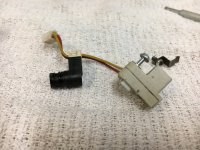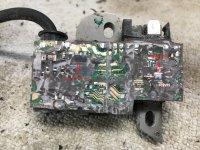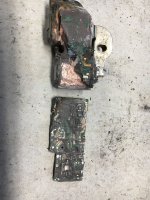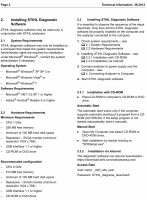You are using an out of date browser. It may not display this or other websites correctly.
You should upgrade or use an alternative browser.
You should upgrade or use an alternative browser.
261 M-Tronic - What makes it tick.....
- Thread starter breese
- Start date
- Local time
- 4:35 PM
- User ID
- 319
- Joined
- Dec 29, 2015
- Messages
- 9,614
- Reaction score
- 63,347
- Location
- Strong Island NY
Cool thread.
angelo c
Coal Member
- Local time
- 4:35 PM
- User ID
- 362
- Joined
- Dec 31, 2015
- Messages
- 2,919
- Reaction score
- 11,564
- Location
- Peoples Republic of North Jersey
Im subbed.....may be a while before I "Google" all these big words though...
us "sales" guys aint got much use fer big words.....we leave them to the "engineers"...
us "sales" guys aint got much use fer big words.....we leave them to the "engineers"...
MustangMike
Mastermind Approved!
- Local time
- 4:35 PM
- User ID
- 338
- Joined
- Dec 30, 2015
- Messages
- 11,539
- Reaction score
- 36,412
- Location
- Brewster, NY
See the other 261 thread for reference to a temp sensor.
- Local time
- 3:35 PM
- User ID
- 3719
- Joined
- Aug 2, 2017
- Messages
- 393
- Reaction score
- 1,563
- Location
- Chicagoland, Illinois
Did a little testing on the carb Sensor / Solenoid

It does not react (according to OHM testing) to pressure differentials. Until I can asses the possible voltages being supplied, I can not answer to just what this Solenoid is actually doing and its reaction times.
On the Coil, I have uncovered one side of the PC board. It is possible there is more than one.
On the left side you can see what appears to be a voltage regulator.
On the right (at first glace) it appeared to be a CPU but after looking closer at the large trace lines, it is possible this is the circuit for applying power to the spark plug.

Again, I am in the discovery phase and the next step is to remove enough of the epoxy to get access to the rear of this (and other possible) PC board/s

It does not react (according to OHM testing) to pressure differentials. Until I can asses the possible voltages being supplied, I can not answer to just what this Solenoid is actually doing and its reaction times.
On the Coil, I have uncovered one side of the PC board. It is possible there is more than one.
On the left side you can see what appears to be a voltage regulator.
On the right (at first glace) it appeared to be a CPU but after looking closer at the large trace lines, it is possible this is the circuit for applying power to the spark plug.

Again, I am in the discovery phase and the next step is to remove enough of the epoxy to get access to the rear of this (and other possible) PC board/s
- Local time
- 3:35 PM
- User ID
- 4
- Joined
- Dec 3, 2015
- Messages
- 52,954
- Reaction score
- 352,725
- Location
- Banner Springs Tennessee
Did a little testing on the carb Sensor / Solenoid
View attachment 90312
It does not react (according to OHM testing) to pressure differentials. Until I can asses the possible voltages being supplied, I can not answer to just what this Solenoid is actually doing and its reaction times.
On the Coil, I have uncovered one side of the PC board. It is possible there is more than one.
On the left side you can see what appears to be a voltage regulator.
On the right (at first glace) it appeared to be a CPU but after looking closer at the large trace lines, it is possible this is the circuit for applying power to the spark plug.
View attachment 90313
Again, I am in the discovery phase and the next step is to remove enough of the epoxy to get access to the rear of this (and other possible) PC board/s
There's a lot going on in there.
- Local time
- 3:35 PM
- User ID
- 3719
- Joined
- Aug 2, 2017
- Messages
- 393
- Reaction score
- 1,563
- Location
- Chicagoland, Illinois
What a lot of people do not realize is when these saws went away from Points to Electronic, the circuitry had to go somewhere... So all this time there has been a built in circuit board of some type.There's a lot going on in there.
Now that the circuit has been updated to monitor/react to other components, its only fitting to add that do what was already built into the coil.
The positive to all this from day 1 is it is encapsulated and protecting it from gas, oil, weather, etc....
Cracker Boy
Fl cracker
- Local time
- 4:35 PM
- User ID
- 1359
- Joined
- May 31, 2016
- Messages
- 4,301
- Reaction score
- 7,594
- Location
- Florida
I got a buddy who is a stihl master certified tech im gonna pick his brain some on these.i will have to wait he is slammed right now with the hurricane at the ace were he works last year he was in virginia beach for 2 weeks at the factory in school.when mine is done with the mechanic side im gonna do.im gonna see if there is any data or serv. Manuals on these. This is very interesting.
- Local time
- 3:35 PM
- User ID
- 3719
- Joined
- Aug 2, 2017
- Messages
- 393
- Reaction score
- 1,563
- Location
- Chicagoland, Illinois
I would LOVE to get my hands on the Saw to Computer cable and the software... for starters.
Biggest questions I have:
What are the voltages across this data/power cable between the coil, carb, and any other component (its a little hard to get that info without a running saw... LOL ).
Any schematics available?
Biggest questions I have:
What are the voltages across this data/power cable between the coil, carb, and any other component (its a little hard to get that info without a running saw... LOL ).
Any schematics available?
Stihl working Hard
Is it Friday yet
- Local time
- 5:35 AM
- User ID
- 802
- Joined
- Feb 6, 2016
- Messages
- 34,308
- Reaction score
- 109,218
- Location
- Perth Australia
Your not wrong there that would never work again if I seperated itThere's a lot going on in there.
Ozhoo
Well-Known OPE Member
- Local time
- 4:35 PM
- User ID
- 723
- Joined
- Jan 29, 2016
- Messages
- 15
- Reaction score
- 68
- Location
- Kingston, GA
I would LOVE to get my hands on the Saw to Computer cable and the software... for starters.
Biggest questions I have:
What are the voltages across this data/power cable between the coil, carb, and any other component (its a little hard to get that info without a running saw... LOL ).
Any schematics available?
The solenoid gets tested w/ a 9V battery
Last edited:
- Local time
- 3:35 PM
- User ID
- 3719
- Joined
- Aug 2, 2017
- Messages
- 393
- Reaction score
- 1,563
- Location
- Chicagoland, Illinois
Well, after 5 hrs I managed to separate the board from the coil.
While not pretty.. I have more info.

While the board is double sided (traces on both sides), there are very few components on the back. Mostly connection points to the coils, the slave connector, and 2 very well hidden capacitors (between the 2 coils).
So far I have not located a single manufacturer label or number on anything.
The biggest point to killing this one is Location.... What is located where, and what is it...
Next I will be attempting to connect a scope up to one of the other coils and see what I can see.
While not pretty.. I have more info.

While the board is double sided (traces on both sides), there are very few components on the back. Mostly connection points to the coils, the slave connector, and 2 very well hidden capacitors (between the 2 coils).
So far I have not located a single manufacturer label or number on anything.
The biggest point to killing this one is Location.... What is located where, and what is it...
Next I will be attempting to connect a scope up to one of the other coils and see what I can see.
With this info, I can test the solenoid I have. I will also now be looking for the voltage input area on this Killed coil. Once that location is found, it might be possible to drill that area on a different coil and apply power, keeping me from having to hook up a good, running saw to the scope..The solenoid gets tested w/ a 9V battery
paragonbuilder
Mastermind Approved!
- Local time
- 4:35 PM
- User ID
- 384
- Joined
- Jan 2, 2016
- Messages
- 9,229
- Reaction score
- 33,870
- Location
- Norwich, CT
Well, after 5 hrs I managed to separate the board from the coil.
While not pretty.. I have more info.
View attachment 90365
While the board is double sided (traces on both sides), there are very few components on the back. Mostly connection points to the coils, the slave connector, and 2 very well hidden capacitors (between the 2 coils).
So far I have not located a single manufacturer label or number on anything.
The biggest point to killing this one is Location.... What is located where, and what is it...
Next I will be attempting to connect a scope up to one of the other coils and see what I can see.
With this info, I can test the solenoid I have. I will also now be looking for the voltage input area on this Killed coil. Once that location is found, it might be possible to drill that area on a different coil and apply power, keeping me from having to hook up a good, running saw to the scope..
It is so great to collaborate with guys from all walks of life on these forums. I've been looking for someone who understands these things and has a passion for saws to hack these things for a while. And now here you are!!
[emoji41]
- Local time
- 3:35 PM
- User ID
- 3719
- Joined
- Aug 2, 2017
- Messages
- 393
- Reaction score
- 1,563
- Location
- Chicagoland, Illinois
Thank you.It is so great to collaborate with guys from all walks of life on these forums. I've been looking for someone who understands these things and has a passion for saws to hack these things for a while. And now here you are!!
I never really understood the tech side of chainsaws and after working on my grandfathers saws (rest in peace), I discovered the Techie and Mechanic sides of me had a new coming of togetherness.
I am a Corp I.T. guy but in a past life was a mechanic for a village specializing in fire trucks and ambulances.
I always have something I am playing with and this just Peeked my interest to the point I have a dedicated area on my bench for just this...
I am hoping that what comes from this will make better (modified) saws with less of the hardware changes... to a point
lol
Cracker Boy
Fl cracker
- Local time
- 4:35 PM
- User ID
- 1359
- Joined
- May 31, 2016
- Messages
- 4,301
- Reaction score
- 7,594
- Location
- Florida
retro
Void where inhibited
A 9 volt battery will pop the solenoid completely open or closed, proving that the solenoid coil is good and the plunger shaft is free to move. When you try that watch carefully which parts of the plunger piston move... A variable voltage control/current control DC power supply might help demonstrate how the solenoid works (and provide PCB hardware clues to aid in tracing/identifying components) while mounted onto the carb.
It is a linear motor that not only opens and closes the fuel supply port completely, it is able to hold the plunger steady at any location along its range of stroke to control how much fuel is allowed to pass through it. This type of linear motor generally requires either a variable voltage/constant current, OR a variable current/constant voltage control signal in a cheap and dumb one or two-wire DC network.
It is a linear motor that not only opens and closes the fuel supply port completely, it is able to hold the plunger steady at any location along its range of stroke to control how much fuel is allowed to pass through it. This type of linear motor generally requires either a variable voltage/constant current, OR a variable current/constant voltage control signal in a cheap and dumb one or two-wire DC network.
retro
Void where inhibited
I am hoping that what comes from this will make better (modified) saws with less of the hardware changes... to a point
lol
Should be doable armed with a hot-air rework station, some creative use of ohms law & an over-achiever dose of determination!
paragonbuilder
Mastermind Approved!
- Local time
- 4:35 PM
- User ID
- 384
- Joined
- Jan 2, 2016
- Messages
- 9,229
- Reaction score
- 33,870
- Location
- Norwich, CT
I am hoping that what comes from this will make better (modified) saws with less of the hardware changes... to a point
lol
I am hoping to enhance our hardware modified saws even further!!![emoji41]
But a "bolt on" chip would be cool too...







